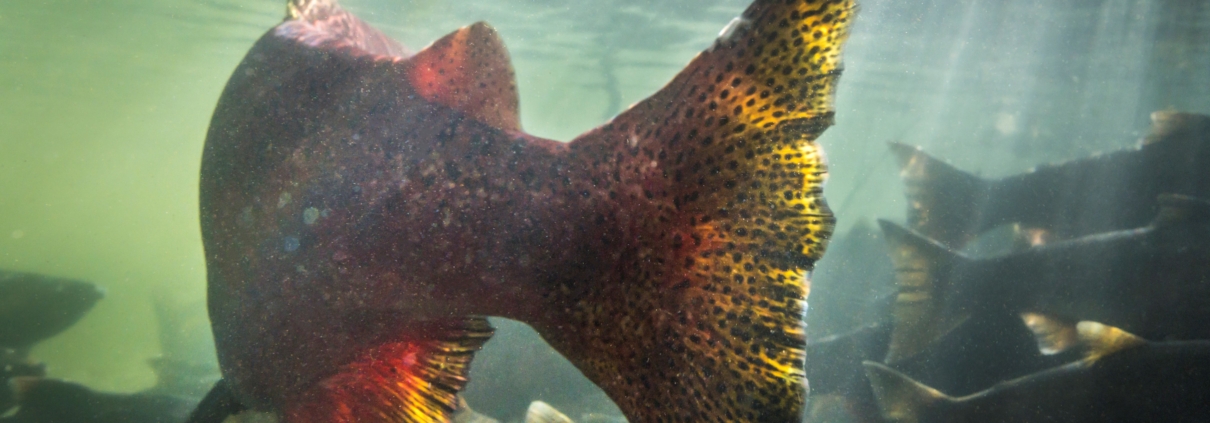Study finds last decade was the worst on record for salmon monitoring in B.C. and Yukon
New peer-reviewed paper highlights dramatic declines in monitoring for salmon populations.
VANCOUVER, B.C. – A new study has found that the past decade was the worst on record for monitoring salmon populations in British Columbia and the Yukon since broadscale surveys began more than 70 years ago. The paper, published in the Canadian Journal of Fisheries and Aquatic Sciences, reveals that monitoring efforts have steadily declined since the 1980s, leaving pervasive data gaps that hinder progress in salmon conservation and management. In the past decade alone, nearly two-thirds of historically monitored salmon populations had no reported estimates.
The authors found that for three of the five species studied, changes in monitoring closely mirrored commercial value. This suggests that commercial fishing provided a strong motivation to monitor these species. In recent years, as commercial fishing opportunities declined across the province, the monitoring of salmon populations also dropped off. A striking example of this is coho salmon: monitoring efforts fell sharply in the early 2000s, after a moratorium on coho fishing was introduced.
“Our research shows steep declines in salmon monitoring, with fisheries often prioritized over fish,” says Emma Atkinson, PhD student at the University of Alberta and lead author of the paper. “70 per cent of salmon are below their long-term average abundance, and effective conservation and management start with robust monitoring – data we need now more than ever to advance salmon resilience in the face of climate change.”
Canada’s Wild Salmon Policy, enacted in 2005, marked a shift away from viewing salmon as stocks for harvest and toward conservation. However, this study demonstrates how monitoring efforts have continued to decline.
“Fraser sockeye is the only example where monitoring has increased during the time studied. But we can’t rely on just one well-resourced single stock. Funding needs to be distributed equitably across the province to support both conservation and fisheries. When fish aren’t counted across regions, we lose information needed to assess impacts of recovery efforts or to set quotas necessary to reopen fisheries,” says Atkinson.
‘Salmon monitoring’ efforts may be as simple as counting fish by creek walks, boats, and aerial or snorkel surveys, or as complex as cameras attached to weirs that count salmon using artificial intelligence.
The authors provide several recommendations to improve the quality and coverage of data, starting with Canada’s Wild Salmon Policy, which provides a blueprint for monitoring rooted in salmon conservation.
“There are almost 7,000 distinct populations of salmon in B.C. and the Yukon – each with unique life histories and traits. Conserving this diversity is key to building a resilient future against climate change and other threats, and monitoring efforts must be designed to support that goal,” says Bruno Carturan, analyst at the Pacific Salmon Foundation (PSF) and co-author of the paper.
Additionally, the authors emphasize that monitoring efforts must be adequately resourced for more than just commercially important populations, with data centrally compiled in a timely manner that respects Indigenous data sovereignty. Furthermore, new technology can improve efficiency.
“Investing in the application of new technologies, such as artificial intelligence counting in-river, drones, and environmental DNA, can improve data quality and reduce monitoring costs. Many of these approaches are no longer experimental, as they have been proven effective and accurate,” says Carturan.
More information:
- Salmon monitoring in B.C. and the Yukon peaked in the mid-1980s but has steadily declined since. Of 6,973 unique salmon populations, only 37 per cent had recorded data on ‘spawner abundance’ — a key metric for assessing salmon status and trends — in the past decade, compared to 69 per cent in the 1980s, a drop of 31 per cent.
- Coho and chum salmon saw the greatest declines in monitoring. Pink salmon also saw major reductions, especially in northern and central B.C.
- Canada’s Pacific salmon fishery had to withdraw from the Marine Stewardship Council certification program in 2022, largely due to a lack of sufficient data to assess salmon abundance trends.
Read the full study, ‘Monitoring for fisheries or for fish? Declines in monitoring of salmon spawners continue despite a conservation crisis‘: https://doi.org/10.1139/cjfas-2024-0387
Media contact:
Braela Kwan
Communications Specialist, Pacific Salmon Foundation
604-664-7664 ext. 1025
Click here for photo assets.



